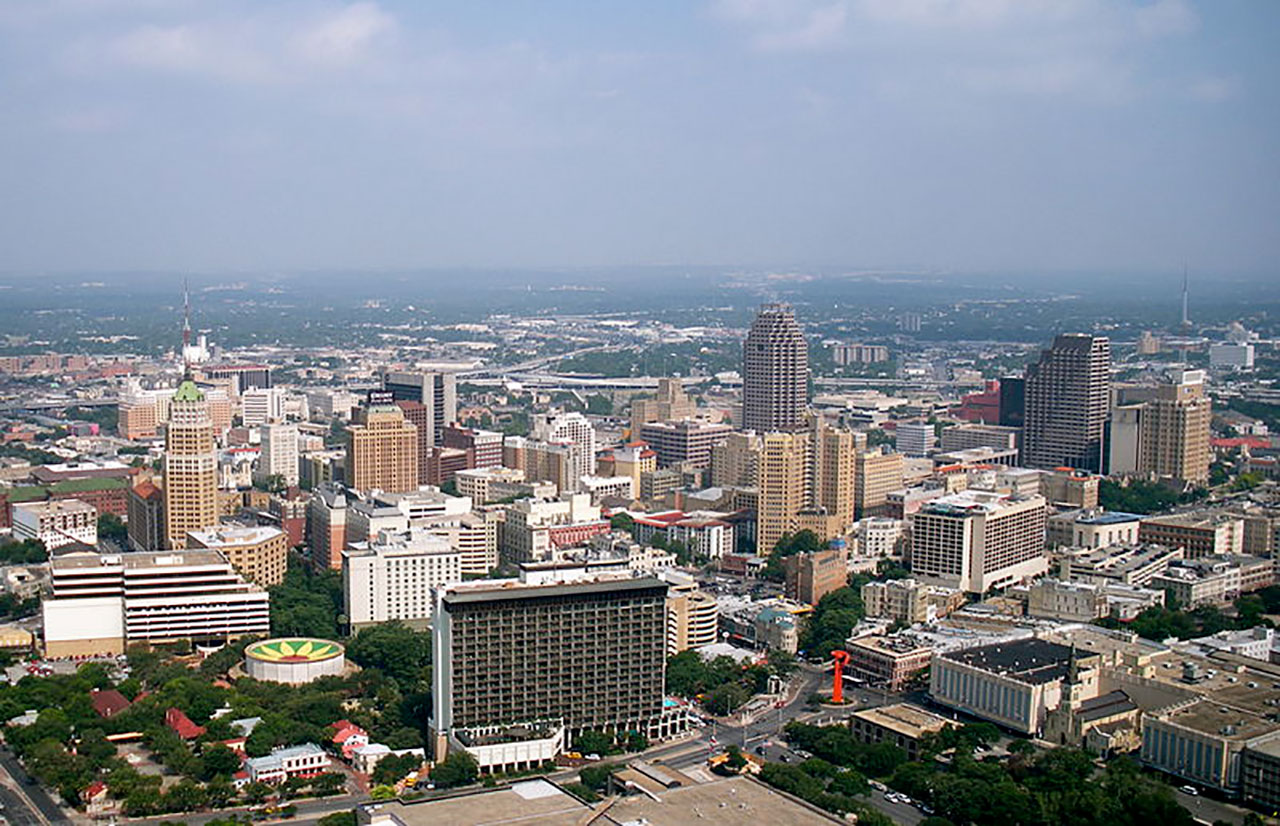With its sightseeing attractions and military bases, San Antonio may be a quaint tourist destination—home of the Alamo and the scenic River Walk—but with a population of nearly 1.5 million, it is also the seventh-largest city in America. In fast-growing Texas, boasting six of the nation’s 20 most populous cities, only Houston is bigger. Though frequently overshadowed by its more cosmopolitan siblings Austin and Dallas, “San Antone” is a teeming urban center, with the same problems confronting other major cities. And in one of those problem areas—crime—San Antonio is, unfortunately, a leader. According to FBI data, the diverse, progressively run Alamo City had the highest rate of “serious crime” among the country’s 15 largest cities in 2016.
The incidence of reported crimes in San Antonio fluctuates from year to year, affecting the comparative rankings, but despite a reduction in some categories in 2017, heavily Hispanic San Antonio has had a major crime problem since the 1980s. With more than 1,200 drive-by shootings in 1993, many gang-related, San Antonio earned the nickname the “Drive-By City.” Reported homicides in 2016 were the highest since 1995. San Antonio also has one of the nation’s worst rates of auto theft. In the National Council for Home Safety and Security’s 2018 ranking of Texas cities, San Antonio came in at 215 out of 224, making it “one of the most dangerous cities in the nation.”
San Antonio police chief William McManus insists that the city is safe, and that the police department is doing everything possible to combat crime, though residents are understandably skeptical. Though San Antonio is not officially a “sanctuary city,” the police department has long prevented officers from asking detainees about their immigration status. Moreover, San Antonio was one of the first cities to file a suit challenging Senate Bill 4, the state law passed in 2017 banning sanctuary cities and requiring local law enforcement to cooperate with federal immigration authorities. (The law has been upheld.) McManus was critical of SB 4 prior to its passage, asserting that it would generate mistrust in immigrant communities, making it harder for officers to prevent and solve crime.
Democrat-majority cities with heavily minority populations sometimes face a political dilemma concerning crime control. Should the elected officials encourage aggressive policing, at the risk of antagonizing groups claiming to represent minority communities, or favor a hands-off style that appeases the minority community while turning a blind eye to illegal-immigrant offenders? It appears that San Antonio mayor Ron Nirenberg, a left-leaning activist who defeated centrist incumbent Ivy Taylor in 2017, and a city council dominated by progressives (on which Nirenberg previously served), have chosen the lenient approach, sacrificing public safety to maintain the support of noisy immigrant groups.
The state attorney general has launched an investigation of McManus for ordering the release last year of 12 illegal immigrants who were being transported by a human smuggler; only the truck driver was detained. Citizens filed complaints against the police chief, alleging that his failure to hold the illegals for federal authorities violated SB 4. The case attracted the attention of statewide Republican officials who supported the law, such as Lieutenant Governor Dan Patrick, and the San Antonio Police Officers Association also criticized the chief. “We finally have a higher authority looking into the chief’s conduct. That is a good thing,” said SAPOA president Mike Helle, adding that “there were several unlawful things done by McManus that day, and it needs to come to light.”
The rank-and-file’s public criticism of its police chief (who was appointed by the city council in 2006) over the human-smuggling incident is not the first sign of conflict between street cops and McManus. In 2016, SAPOA’s 2,000 members returned a 97 percent “no confidence” vote against the chief and called for his resignation; McManus, with the support of local elected officials, refused to step down. In a city plagued by high crime rates, residents are justified in questioning the leadership of a police chief who has so thoroughly lost the confidence of his own officers.
McManus is not the only dubious figure in San Antonio’s criminal-justice system. Bexar County district attorney Nicholas “Nico” LaHood, a Democrat elected in 2014, was arrested for selling drugs at a gentlemen’s club when he was 21 (he is now 37). LaHood’s brief tenure as San Antonio’s top prosecutor (he lost his renomination bid in March) was marred by other controversies, including charges that he threatened to “destroy” the law practices of defense lawyers if they pursued claims of prosecutorial misconduct. LaHood’s replacement as the Democratic nominee, Joe Gonzales, who will face Republican candidate Tylden Shaeffer in November, promises to be even less conventional. During the Democratic primary, Gonzales suggested that he favored the elimination of cash bonds in all misdemeanor and nonviolent felony cases, a controversial reform that would replace the bail system with “personal recognizance” for many criminal defendants. Such reforms, like the sanctuary-city policies banned by SB 4, elevate virtue-signaling to certain voter blocs over public safety.
Elections have consequences, especially with regard to government policies dealing with law enforcement and public safety. Local pols often cater to interest groups favoring leniency instead of the rule of law. Have the beleaguered residents of San Antonio had enough yet?
Photo: ZeChief





